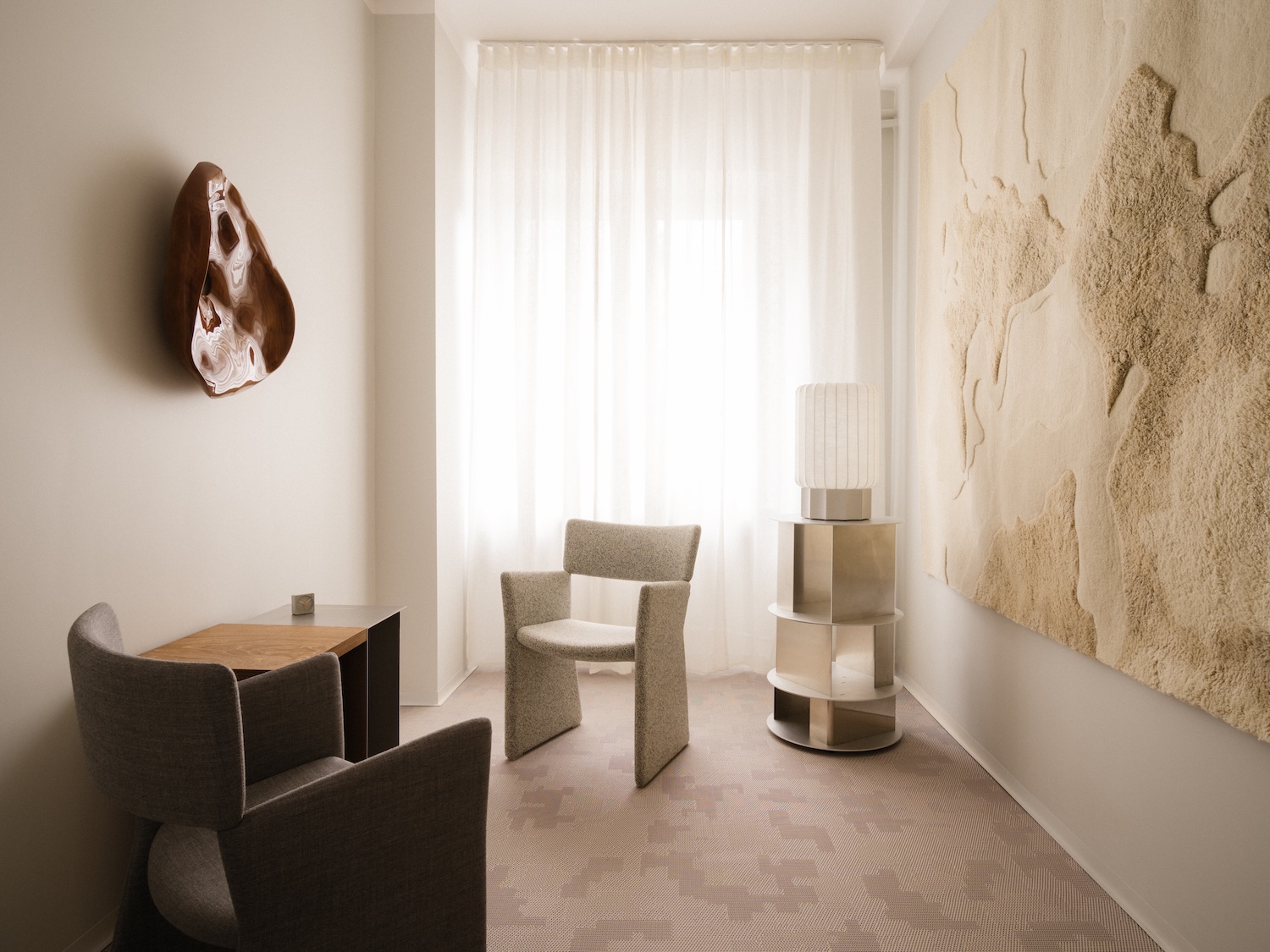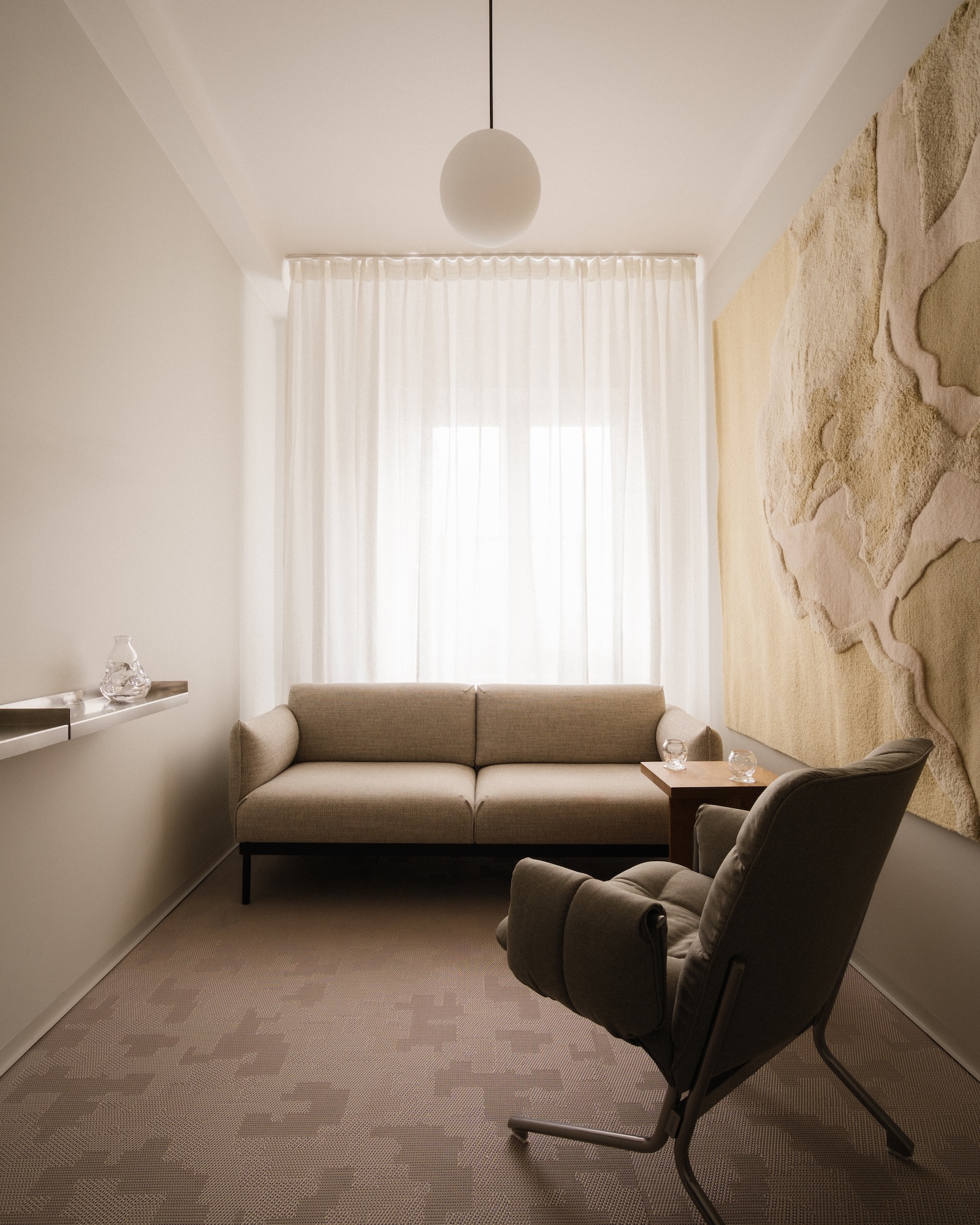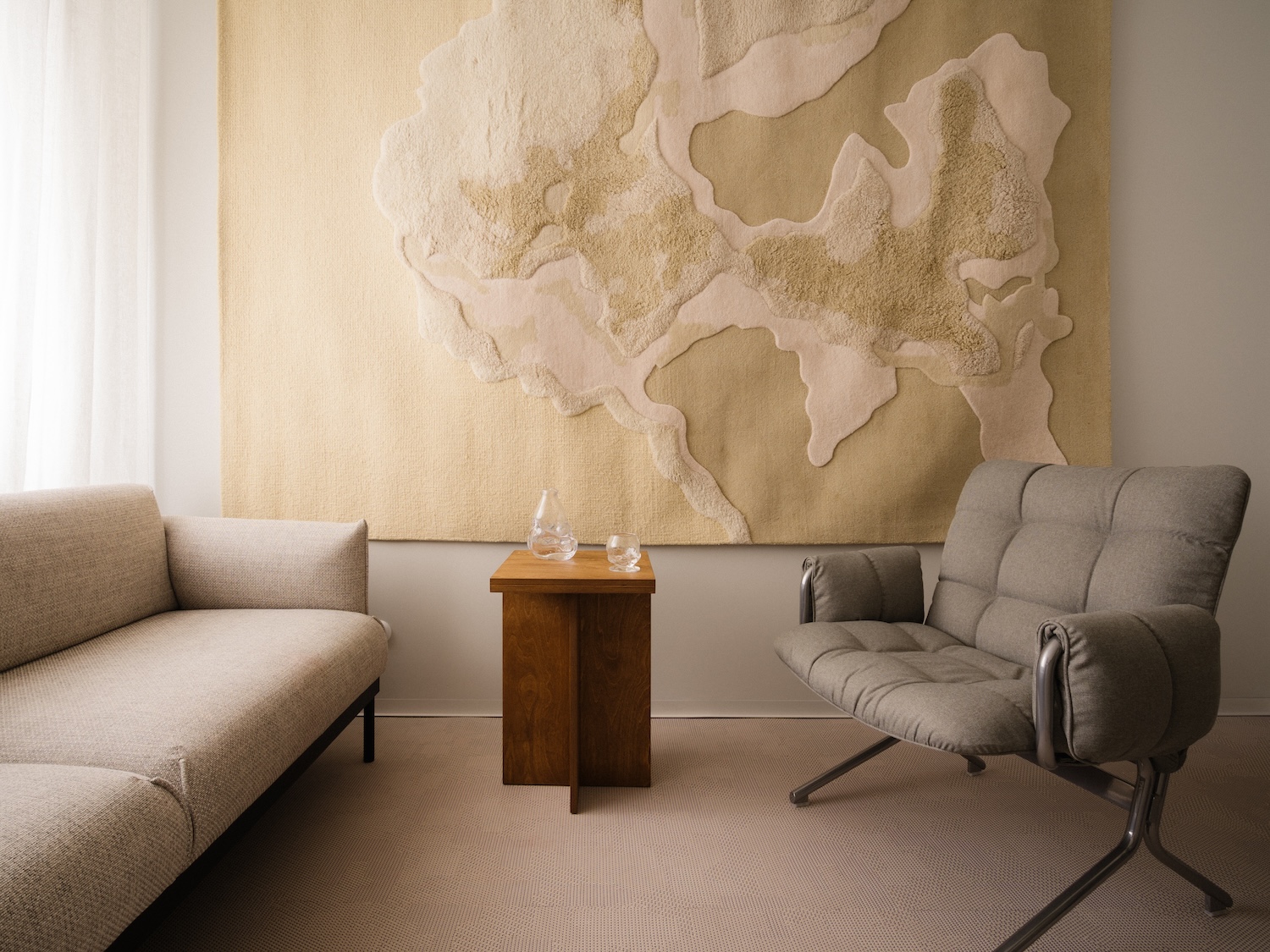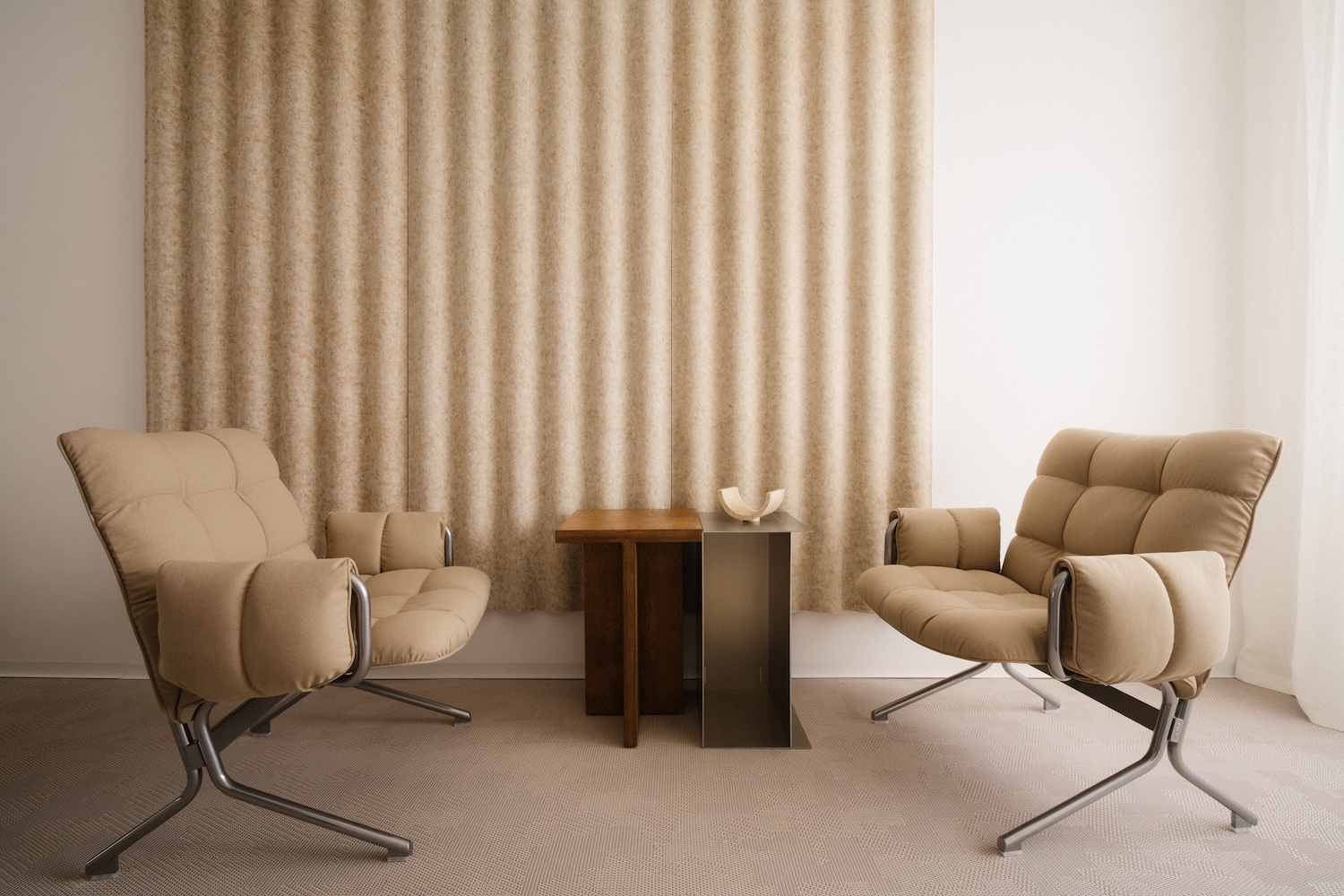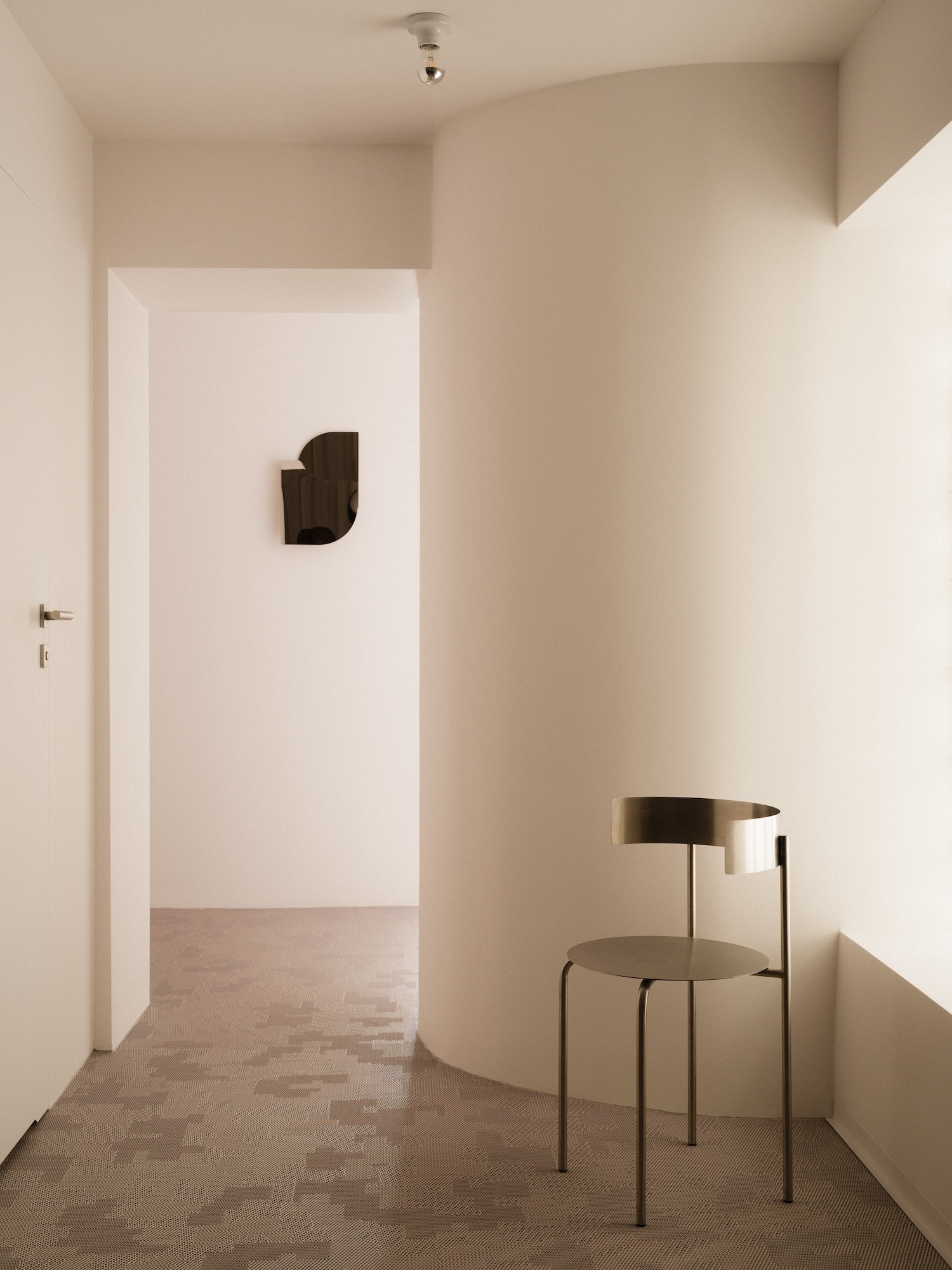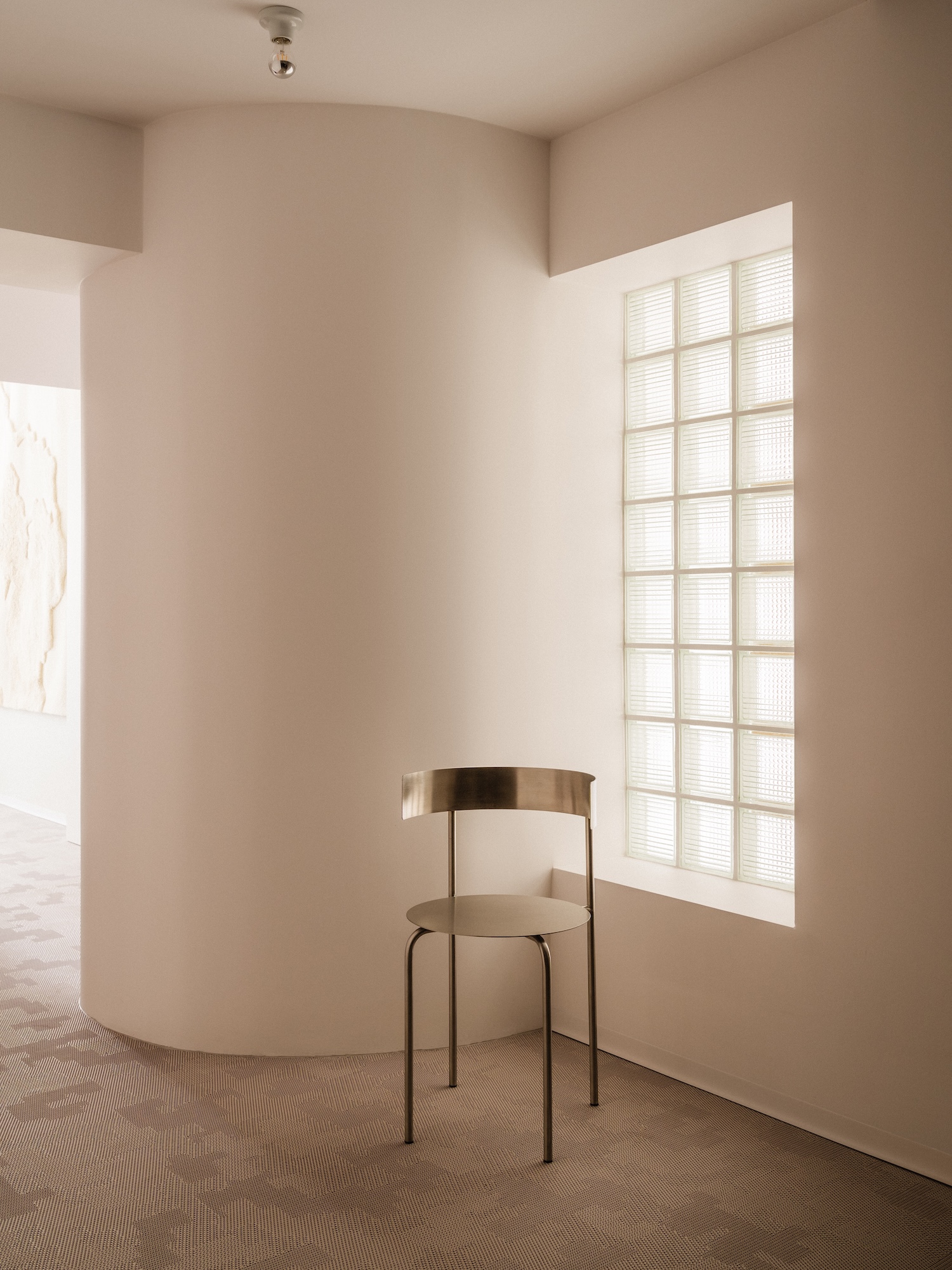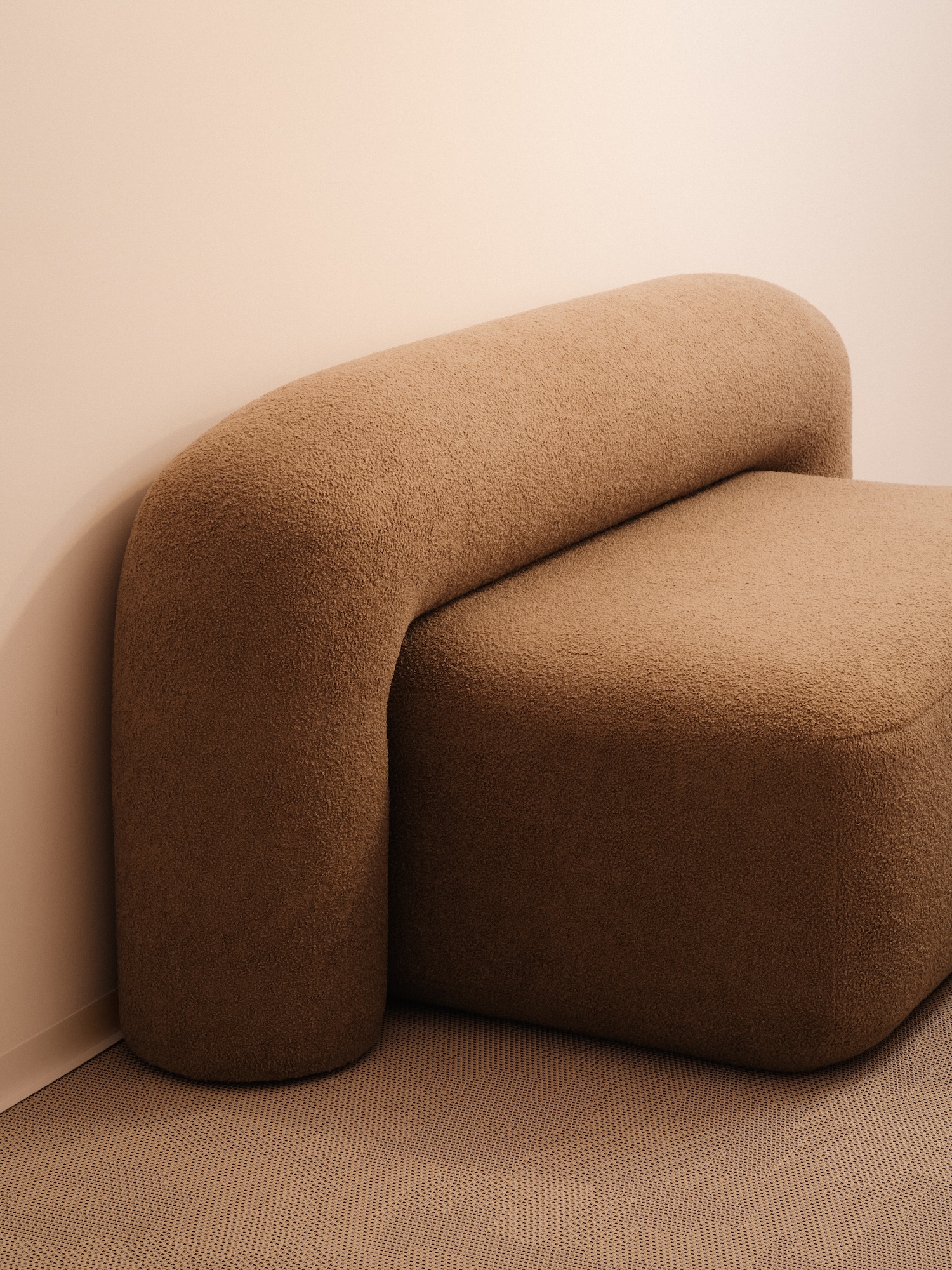Mozna Zwariowac is a minimalist interiors project located in Warsaw, Poland, designed by Zuzanna Gasior from Thisispaper Studio. In Warsaw’s historic Marszałkowska district, designer Zuzanna Gąsior of Thisispaper Studio has transformed this often-maligned material into something approaching poetry. Her renovation of the “Można Zwariować” therapeutic clinic demonstrates how thoughtful material choices can elevate a space from merely functional to profoundly nurturing.
The clinic’s centerpiece – a sculptural elliptical column – emerged not from pure aesthetic choice but from necessity, transforming a structural constraint into an architectural statement. This approach reflects a deeper philosophy about healing spaces: that limitations can become opportunities for innovation. The column guides visitors toward what Gąsior calls the “living room,” where a soft Moss sofa creates an intentional departure from clinical sterility.
Most compelling is Gąsior’s rehabilitation of the glass block, a material that carries complicated cultural baggage in Poland, where it’s often associated with post-communist architectural shortcuts of the 1990s. “Glass blocks are a very delicate topic, a material completely underestimated,” she notes. Drawing inspiration from Japanese architectural traditions, Gąsior deploys these blocks to create rhythmic passages between rooms, transforming them from utilitarian dividers into light-filtering sculptures that add depth and poetry to the space.
The material palette builds on this sensitivity to light and texture. A Pebbles pendant lamp with hand-blown shades casts organic patterns, while the Sashiko vinyl flooring, inspired by Japanese embroidery, provides a subtle geometric counterpoint. These choices reflect a sophisticated understanding of how materials can influence emotional states – crucial for a space dedicated to mental health.
Art plays a vital role in the clinic’s healing mission. Bartłomiej Stawiński’s ear-inspired sculpture serves as both aesthetic anchor and metaphor, its polished surfaces embodying the act of listening itself. This integration of art extends to functional pieces: ergonomic chairs like the Crown Chair ensure physical comfort supports psychological ease, while rugs by Massimo Copenhagen serve dual purposes as acoustic dampeners and visual softeners.




